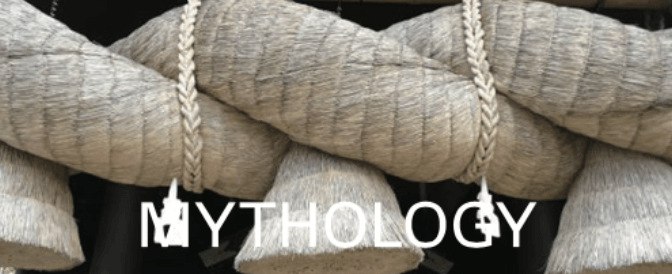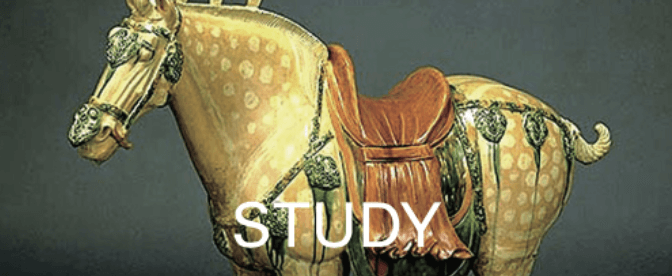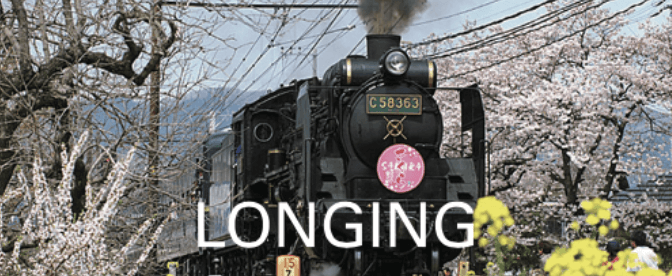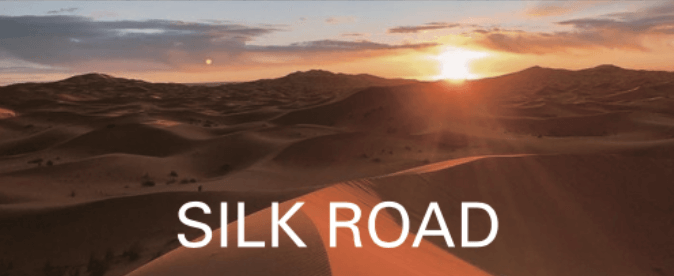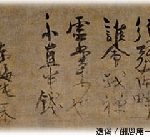
Emperor Go-Komatsu (1377 – 1433) was a master of calligraphy. Ikkyu (1394 – 1481): a Zen Buddhist monk and poet, who had a major influence on the infusion of Japanese art and literature with Zen thought, was also a master of calligraphy, in the Muromachi Period (1366 – 1573).
He is said to have been an illegitimate child of Emperor Go-Komatsu. Ikkyu was a teacher of Murata Juko (1423 – 1502), a monk and the founder of the Japanese tea ceremony, who founded Wabi, a tea ceremony of refined beauty and simplicity.
He remained the Yuige, a poem for disciples, made by a high priest prior to one’s death, which mentioned “Ikkyu’s zen, No one can understand it if Ikkyu died.” His understanding was a refined style that overlapped Chinese poetic unconventionality and an elegance beyond worldliness, like the court.
The beauty sensibility of Ikkyu has transcended the ages. And this temple possesses the Yuige of Ikkyu.

The Kunitomo Tetsupo gun was said to surpass the imported Hinawajyu matchlock gun in quality. That technique was passed on to the astronomical telescope made by Kunitomo Ikkansai (1778 – 1840), a Japanese gun manufacturer at the end of the Edo period (1603 – 1868).
This center in Nagahama City introduces Ikkansai of Thomas Edison in Asia. He created a reflecting telescope, by himself, and made the surface of the moon diagram with his own reflecting telescope. He also recorded a highly accurate sunspot observation diagram. The four telescopes are preserved and they still look sharp.
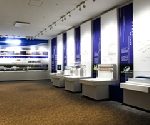
“The Latest Made In Japan: SCMAGLEV !” -Visitors know, via archival documents and film, the stories of the Tokaido Shinkansen, now passing through Japan’s principal metropolitan areas of Tokyo, Nagoya, and Osaka. Those stories tell you how the route was selected and the history of its test runs. And you can experience the 500 km/h speed of the SCMAGLEV.
This museum exhibits “advanced high-speed railway technology” with exhibitions from conventional lines to superconducting linear systems centering on the Tokaido Shinkansen (the Tokaido bullet train). It provides an opportunity to study the impact of railways on society from an economic and cultural perspective.
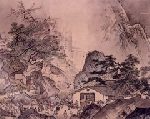
This museum possesses and exhibits about 20,000 pieces of art and crafts and historical materials of the Mouri family, who was the feudal lord of Choshu Domain.
The greatest treasure of this museum is Shikisansuizu, Landscape of the Four Seasons, (Sansui Chokan, Long Landscape Scroll) by Sesshu Toyo (1420 – 1506), a Zen monk and the master ink painter in Japan. This Chokan was drawn with a grand composition, 16m in length, depicting a long journey.
It uses the Chinese drawing style and the Japanese subtle changing of the landscape over the four seasons. Sesshu was born at Akahama Bichu Province Okayama and learned painting from Tensho Shubun, a Japanese Zen Buddhist monk and Painter in the Muromachi Period (1366 – 1573), and a director of the painting bureau, in the Ashikaga Shogunate, at Sokokuji Temple in Kyoto, since he was 13 years old.
He moved to Yamaguchi from Kyoto and started to use Sesshu, as his pseudonym. He went to China during the Song Dynasty (960 – 1279), to study painting.
After returning, he toured around various Provinces and returned to Yamaguchi. This Chokan was made just before Sesshu turned 70 years old, which overlaps with the longest journey of his life.
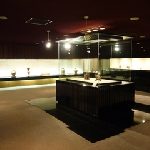
After molding and drying, Bizen ware, the ware that is said that has become Sueki, is baked without glaze, and completed with a method of setting works in the kiln, and firing the split pine wood to a point that it exceeds one thousand degrees. No one is the same Bizen ware.
At this museum, masterpieces are displayed along with the history of Bizen ware. This museum introduces the Bizen ware of Umiagari, Ko Bizen ware pulled up from a ship sunk in the Seto Inland Sea, which has the deep taste of porcelain surface, and Saishiki Bizen, color decorated Bizen ware in the Edo period (1603 – 1868). It conveys the breadth of the beauty of Bizen ware.
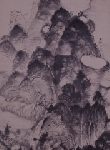
This museum close to Okayama Korakuen Garden, possesses many works in a wide range of genres, including Sesshu Toyo (1420 – 1506), a Zen monk and the master ink painter in Japan, Miyamoto Musashi (1584 – 1645), a Japanese swordsman, writer and painter, and Urakami Gyokudo (1745 – 1820), a Japanese musician, poet, and calligrapher, related to Okayama prefecture.
Gyokudo was a literary painter of the Edo period, and was named after the name of a famous Koto, Chinese harp from the Ming Dynasty (1368 – 1644).
After learning poetry and the seven-stringed Koto from an early age in his life, he became a lordless samurai at 50 years old and wandered about Provinces in Japan. In his later years, he lived in Kyoto, loved Sake, Japanese rice wine, and Koto.
He painted Sansuiga, Landscape painting, like the improvisation, and drew landscapes that he imagined.
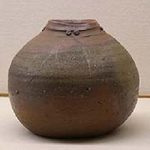
Bizen ware, the ware that is said that has become Sueki, was depressed by porcelain during the Edo period (1603 – 1868). It was the living national treasure Kaneshige Toyo (1896 – 1967), a potter, who gained popularity domestically and abroad and built Bizen’s prosperity once again.
Fujiwara Kei (1899 – 1983), a Japanese potter, learned from Toyo, started making Bizen ware as a 40-year-old. Fujiwara Kei was enthusiastic about literature and Haiku, Japanese seventeen-syllable poems, and wandered about to discover his life. He found something about Bizen ware inside himself, an existence to pursue an imposing and undeniable beauty.
And he was designated a living national treasure of potters. This memorial museum tries to introduce the imposing and undeniable beauty.

The museum possesses antique porcelain from various places in Kyushu Island, including Ko Karatsu ware, a traditional style of Japanese pottery produced in and around Karatsu, Saga.
It also possesses traditional and avant-garde modern works of Kyushu Island, and Ko Imari, traditional Chinese style porcelain shipped to Europe through the port of Imari Saga, which began exporting to Europe in the 17th century.
The origin of ceramics of Kyushu Island is Ko Karatsu. The bowl’s short lip exposes an unglazed surface. Its body, with semitransparent glaze, has a plant painted, like Hagi, a clover bush, reminiscent of the Autumn field.

This museum was built at the site of the lord’s residence of the Hirado Domain in the early Edo period, in the 17th century. Portions of the original stone walls remain. This museum possesses about 30,000 items, including armor from the Kamakura period (1185 – 1333), and later, furnishings of the feudal lord family. This museum also introduces the history of Nanban trade, Japanese trade with Spain and Portugal (1543 – 1641). Before Nagasaki, Dejima was built by an isolation policy of the Tokugawa Shogunate.
This museum introduces the hero of Asia, Tei Seiko, Zheng Chenggong (1624 – 1662), a Chinese Ming loyalist, who resisted the Qing conquest of China in the 17th century, and the hero of the most popular Japanese play, Kokusen-ya Kassen (the Battle of Coxinga), in 1715. He had a Japanese mother and was born in Hirado in 1642. He fought against the Netherlands and the Qing dynasty (1644 – 1912) for the restoration of the Ming dynasty (1368 – 1644).
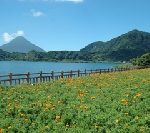
This lake is the largest caldera in Kyushu island, created by volcanic activity about 5,700 years ago. Large eels with a length of 1.8 m live in this lake. The Japanese eel has moved northward by the Kuroshio, the Japan Current from the deep sea of the Mariana Islands in the South Sea.
Coral reefs at the bottom of the South Sea over 200 million years ago moved north, due to crustal movements. They rose and became the Japanese Archipelago, and became Ubusuna, one’s birth place, for Japanese. It might be the lake that connects with the local Ubusunagami, a guardian deity of one’s birthplace.
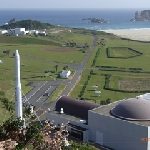
“The Road from the Paleolithic Age to the Space Age” -You can learn much about rockets, artificial satellites, astronauts, the surveys of the moon, and planetary exploration. The road to the new age of Space continues from here.
The rocket launch site facing the coastline is the most beautiful in the world. The Ryukyu Arc consists of 199 islands, which are located like flower frames about 1,260km south of Kyushu Island in the Japanese archipelago. There are high islands with forests and flat islands with fresh spring water. Tanegashima is a flat island, which is suitable for carrying and launching space rockets. In Tanegashima, the Shell Road, from ancient days, and the Guns Road, from the early modern age, overlap, which leads to the Space Road of contemporary times.

Reimeikan is located on the site of Tsumarujo Castle in Kagoshima, which was the castle of the feudal lord, the Satsuma Shimazu clan. One of the excellent collections is the Bracelet of the Big Spiral Shell in the southern sea, Oninishi, which was made in the 3rd to 6th centuries from the end of the Yayoi period (the 4th BC – 3rd century) to the Tumulus period (the 3rd– 7th century).
It is presumed that it used to be an ornament for high ranking women in religious services. The unique pattern on the side is reminiscent of the tao-tie engraving of the Yin dynasty, in ancient China.
Its materials and patterns give us the image of transmitting along the East China Sea.
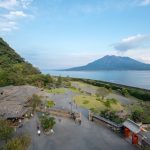
This garden was the villa of the Shimazu family, the lord of the Satsuma clan. It was built by Shimazu Mitsuhisa, the 19th family head of the Shimazu clan. Shimazu Nariakira (1809-1858), the 28th family head of the Shimazu clan loved greatly this garden. It attracted many people, such as Atsuhime, who became the lawful wife of Tokugawa Iesada (1824 – 1858), the 13th Shogun of Tokugawa Shogunate. This is the traditional garden of the Japanese feudal lords. It has a great view of Kagoshima (Kinko) Bay and the active volcano Sakurajima.
Shimazu Nariakira felt a sense of danger about Western countries entering Asia and constructed the first modern, Western-style factories in Japan.
In the garden, there is a stone lantern (Tsuru Toro) in said to resemble a crane taking flight, which was used for gas-lamp experiments and various other historical sites and give a sense of the Shimazu family’s history.
Nariakira and Abe Masahiro (1819 – 1857), the senior councilor of the Tokugawa Shogunate, took the leadership of modern civilization during the middle of the 19th century. Both of them also took care of breeding the changing morning glories, as mentioned enthusiastically in the Japanese gardening history of the Edo era. This garden has been growing those morning glories, too.
